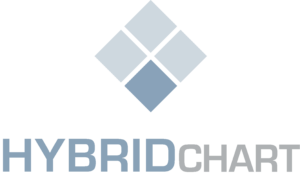Mastering the connection between discharge planning and Transitional Care Management (TCM) isn’t just about following protocols—it’s about creating a seamless continuum of care that benefits both patients and practices. When executed properly, discharge planning sets the foundation for successful TCM services, leading to better patient outcomes and optimal reimbursement.
Understanding the Discharge-to-TCM Pipeline
Transitional Care Management begins the moment discharge planning starts. While many physicians view these as separate processes, they are intrinsically linked. The Centers for Medicare & Medicaid Services (CMS) recognizes this connection through specific TCM billing requirements that start during the discharge process.
Key Components of Effective Discharge Planning for TCM:
- Patient Risk Stratification
- Identifying high-risk patients who will require moderate to high-complexity medical decision making
- Determining appropriate TCM code (99495 vs. 99496) based on complexity
- Planning appropriate timing for follow-up visits
- Communication Requirements
- Establishing contact with patient/caregiver within 2 business days of discharge
- Documenting all attempted and successful communication
- Creating clear handoff protocols between hospital and outpatient care teams
- Medication Management
- Conducting thorough medication reconciliation
- Identifying potential interactions or contraindications
- Ensuring prescriptions are filled before discharge
Best Practices for TCM-Focused Discharge Planning
1. Pre-Discharge Documentation
- Complete and accurate discharge summary
- Clear documentation of medical decision making complexity
- Specific follow-up care instructions
- Medication reconciliation records
2. Communication Protocols
- Designated staff member responsible for post-discharge contact
- Multiple contact methods for patients (phone, email, patient portal)
- Structured communication templates for consistency
- Documentation system for all patient interactions
3. Follow-up Visit Planning
- Scheduling follow-up appointments before discharge
- Flexibility in scheduling to meet TCM timeframe requirements
- Clear communication of appointment importance to patients
Impact on Practice Revenue
Properly aligned discharge planning and TCM services can significantly impact practice revenue:
- TCM reimbursement rates are substantially higher than regular office visits
- Reduced likelihood of denied claims through proper documentation
- Increased patient retention through better care coordination
- Potential for additional service billing during follow-up period
Technology’s Role in Streamlining TCM
Modern healthcare technology platforms like HybridChart have revolutionized how practices manage the discharge-to-TCM transition. By implementing specialized software:
- Documentation is standardized
- Follow-up scheduling is streamlined
- Billing requirements are tracked systematically
Creating a Successful TCM Program
Step 1: Discharge Planning Foundation
- Implement standardized discharge protocols
- Train staff on TCM requirements
- Establish clear communication channels
- Document everything thoroughly
Step 2: Post-Discharge Process
- Make initial contact within 2 business days
- Schedule face-to-face visit within required timeframe
- Begin care plan implementation
- Monitor medication compliance
Step 3: Follow-Up Visit
- Complete required face-to-face visit
- Update care plan as needed
- Document all TCM services provided
- Submit appropriate billing codes
Measuring Success
Effective TCM programs should track key metrics:
- Percentage of eligible patients enrolled in TCM
- Communication attempt success rates
- Follow-up visit completion rates
- Readmission rates for TCM patients
- Revenue per TCM patient
Common Pitfalls to Avoid
- Poor Documentation
- Missing or incomplete discharge summaries
- Inadequate communication records
- Insufficient medical decision making documentation
- Timing Issues
- Late initial contact attempts
- Follow-up visits outside required timeframe
- Delayed medication reconciliation
- Communication Failures
- Incorrect contact information
- Insufficient attempt documentation
- Poor interdepartmental coordination
The HybridChart Advantage
HybridChart’s platform specifically addresses the challenges of coordinating discharge planning and TCM services. Users report:
- 15% increase in practice revenue
- 70% improvement in patient follow-up success
- Streamlined workflow between hospital and office settings
- Reduced administrative burden
- Improved TCM compliance rates
The success of TCM services directly correlates with the quality of discharge planning. By implementing robust discharge protocols focused on TCM requirements, practices can significantly improve patient outcomes while optimizing revenue capture. The key lies in viewing discharge planning and TCM not as separate processes, but as interconnected components of a comprehensive care transition strategy.
Modern healthcare technology solutions like HybridChart provide the infrastructure needed to execute this strategy effectively, ensuring that both patients and practices realize the full benefits of well-coordinated transitional care management.





